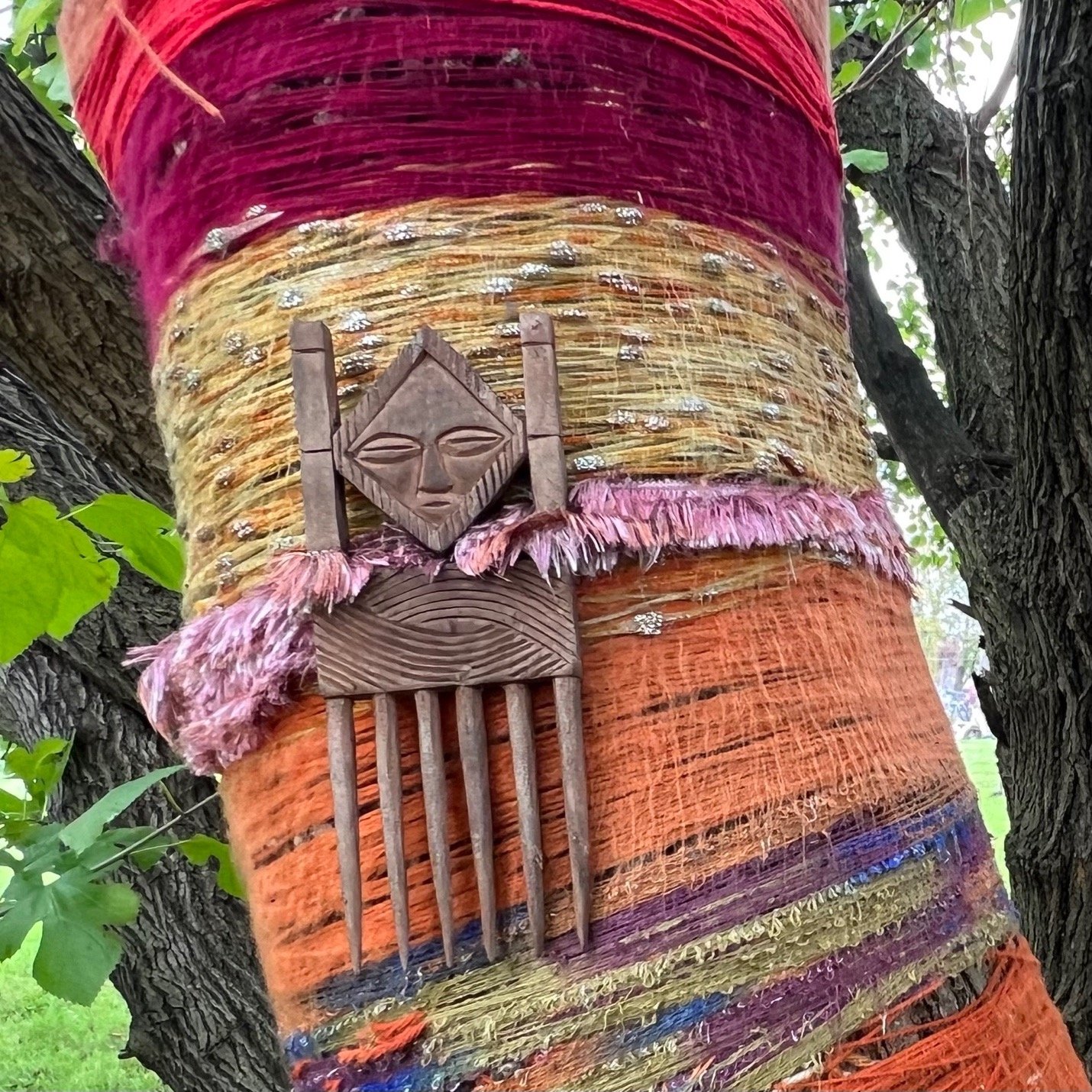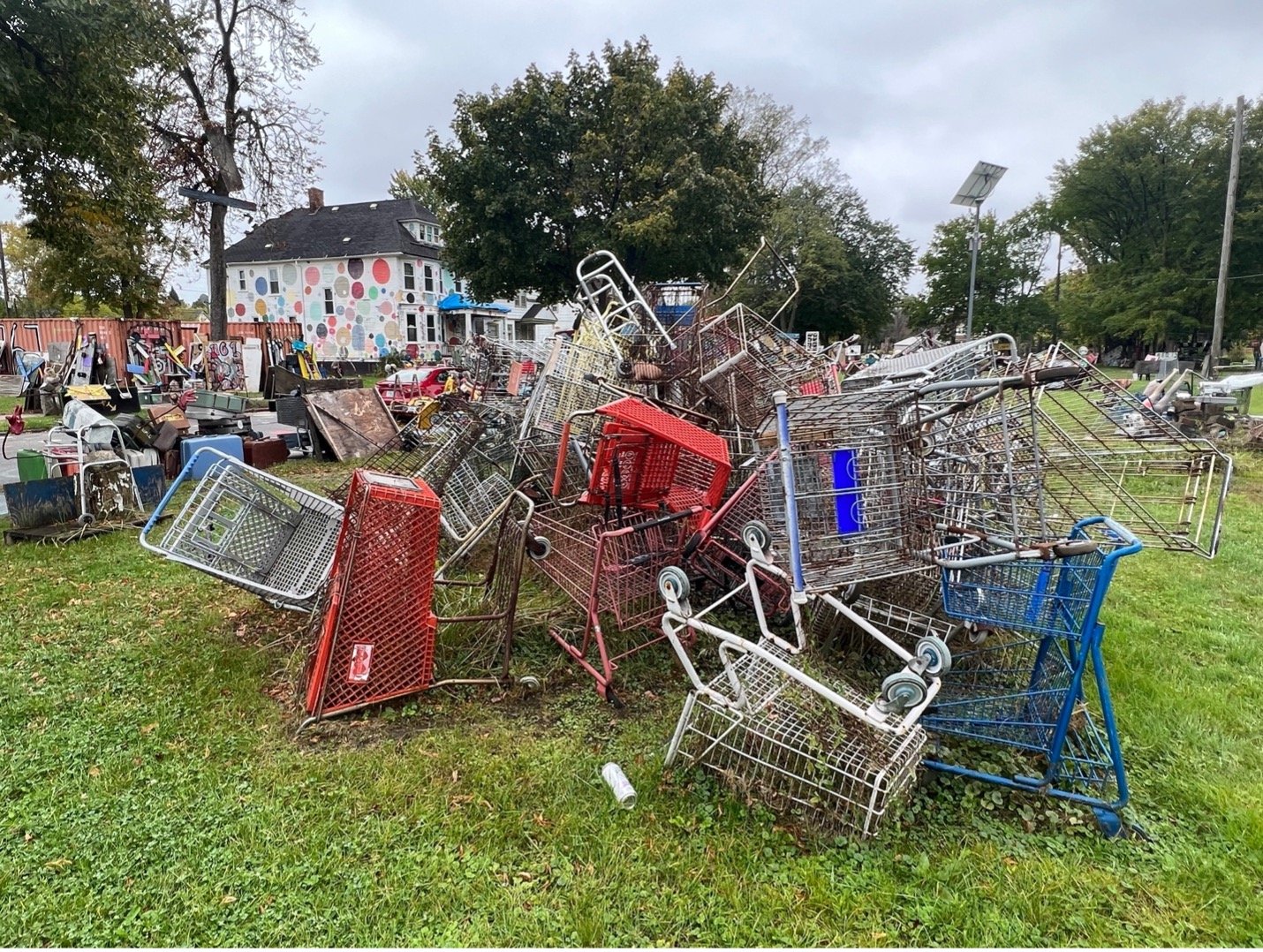Detroit - The Heidelberg Project
Detroit - The Heidelberg Project
To feed my fascination for street art and the repurposing of post-industrial spaces, I visited Detroit. Of all the interesting sites, the Heidelberg Project captured my imagination.
A now-predominately African American neighborhood not far from the Eastern Market, presumably initially settled by German immigrants given the name, the open-air art exhibit captured many aspects of today’s social challenges for Detroit and all of us.
An abandoned house in the Heidelberg Project area.
The first thing I noticed was that as an out-of-towner, I would not have felt entirely safe walking in the district of abandoned houses with many open spaces in between where other dwellings once stood. But then nobody walks in Detroit.
On the other hand, the blocks of the art exhibit are a space where everybody is welcome, where presentations from serious to whimsical engage the visitors. The project’s website states that it aims to educate, bridge, provoke, and stimulate, and it did. Founded in 1986 by the artist Tyree Guyton, his wife, and his grandfather, their stated aim is to draw attention to the plight of the city’s forgotten neighborhoods.
Welcome! Photo Credit: The Heidelberg Project
Polka Dot House in the background. Who walked in these shoes?
The iconic, colorful polka dots painted on the street and the central house symbolize society's diversity. As for the rest of the art, I was on my own to interpret it. There was an abundance of old shoes figuring prominently in several exhibits, presumably standing in for all those feet who once walked here and subsequently left or died.
A row of TV screens alerted the viewer to the unreliability of our news channels. As it featured fake news, it must have been a more recent installation.
A graveyard of children’s vehicles was a miniature representation of car junkyards.
Colorfully wool-wrapped trees evoked the spirit of rituals.
A pile-up of supermarket shopping carts conveyed messages of consumerism. Or maybe it was a reminder that only empty carts remained in the food deserts of disadvantaged Detroit neighborhoods. I was not sure.
The energy of the Heidelberg Project is raw. Its aesthetics do not conform to the cultural sensitivities of an over-privileged class of art connoisseurs who view art as a product to be privately owned, decorating oversized architecturally impressive museums or McMansions. But that is the beauty of it. The project is accessible to everybody—no exclusive membership is required. The appeal is immediate, and it made me feel something. That is more than I can say about some modern art installations that have the pretentious egos of the curators stamped all over it.
Some exhibits are whimsical; some are profound. There are many messages. An otherwise unremarkable city block has been transformed into something that attracts people from afar. Its materials, the once cherished but now casually discarded objects of a consumer society, are a powerful reminder that our laboriously acquired belongings will soon be trash or at best, will be up-cycled into street art.
Photos by Helene Munson.













